Fire Bosses & Super Scoopers – Croatia’s Firefighting Fleet

Zemunik airbase has been home to firefighting aircraft from the days when Croatia still formed part of Yugoslavia. After the breakup in 1991, its CL-215s were withdrawn from the country and sold to Greece. The Croatian Air Force initially hired CL-215s directly from Bombardier Aerospace and then bought the first of three CL-215s in 1995. They were retired in 2004, by which time they had been replaced with turboprop CL-415s. Over the decade that followed, the fleet grew to its current size of six Bombardier CL-415 Super Scoopers and six Air Tractor AT-802s, four of which are equipped with floats and called Fire Bosses.
The aircraft are operated by the protupožarna eskadrila (firefighting squadron, PPE). PPE has an interesting mix of six CL-415s, two single seat amphibious AT-802A Fire Bosses, one double seat amphibious AT-802A Fire Boss, one land-based AT-802F single seater, one land-based AT-802F double seater, and one locally designated as AT-802A/F that was converted from a land-based AT-802F into a Fire Boss in 2010. It would be easy to say that the CL-415s are more capable in almost every way, but PPE squadron commander lieutenant colonel Davor Turković doesn’t agree with that: “One mustn’t look at the aircraft from one perspective. If you compare performance, the CL-415 will always win. If you compare price, the Air Tractor will always win. You have to compare it not on a tactical level, but on a strategical level. What can be done with the CL-415 in some conditions can certainly not be done with an Air Tractor, but why should it? Sometimes you have a small fire and no wind. You can send two Air Tractors, they will put it out and the total cost of this mission is going to be ten times less than if you deploy a CL-415. On the other hand, there are some meteorological conditions or sea states during which only a CL-415 can be used.”
“The real value of the aircraft is not within the aircraft itself. It is within the capability of the people who are dictating the strategy of how to use an asset in the best possible way. It is the art of balancing how to use it and in order to balance it, you really have to know the aircraft and the pilot. Sometimes the combination of the pilot, the environment and the aircraft can do miracles and sometimes you can have an underachievement. Aerial firefighting is a very special business. If you compare it with a bombing run, you can send bombers and if they miss, the target will still be there. Maybe tomorrow it will be heavily guarded, but it will not move. The fire always moves. Your responses have to be dynamic. On the other hand, fire is very stupid. It’s an enemy that doesn’t have a general staff or plans. It has certain behaviour patterns. The more experienced the system is to recognise the behaviour, connecting the meteorological situation, terrain, vegetation, you can put this on one side of the equation and on the other side you will get how many aircraft and what type of aircraft you need to deploy.”
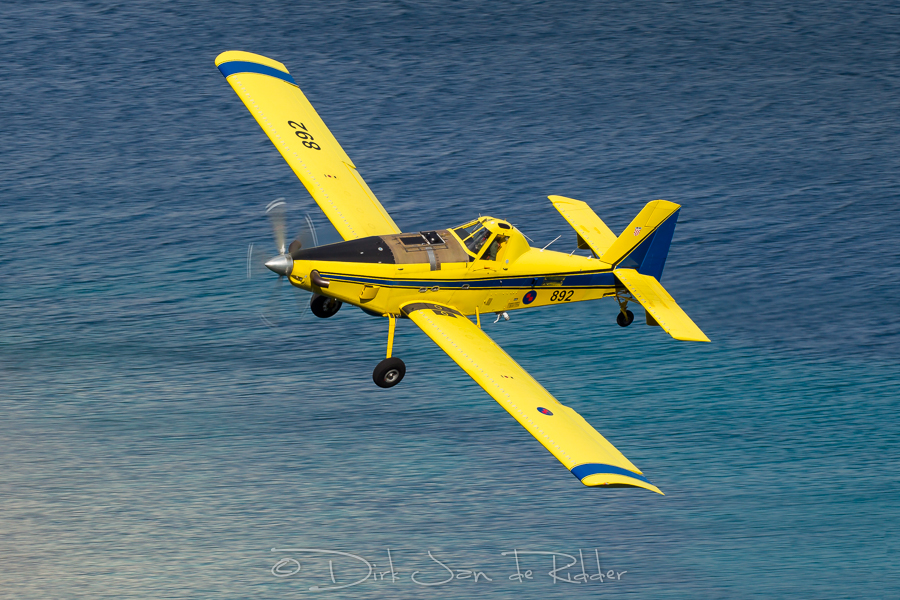
Although the two land-based Air Tractors obviously need to land at an airstrip after every water drop, they do have a value in their own right: “Sometimes they are the best choice. If you have a starting fire near an airstrip, if you dispatch them early enough and if the turnaround time from this airstrip is fast enough, you can put out the fire at a very low cost. We also use the wheeled version for patrols, because they have greater endurance than the Fire Boss and they are operationally the cheapest asset in the fleet. We use the wheeled version where there are not many problems. When we have a fire on the other side of the mountains [where there are few water sources], we send them because it is better for them to work from an airstrip over there than scoopers going up and down the mountain. We try to keep the strong assets committed to the big problems.”
Several factors make fighting wildfires in Croatia unique. “If you look at the real area that we are protecting, we have the biggest number of aircraft per square kilometre in the world. The rest of our firefighting elements are underdeveloped. If you compare our ground troops with, for example, Italian ground troops just across the Adriatic Sea, it is a whole different story. The islands they have are not scarcely inhabited. Sicily is like a country on its own, it is nothing like a Croatian island. These environmental conditions, geographical features, demographical features have forced us to do things in a way nobody in the world does it. The further you go comparing [us to] bigger or wealthier countries, the differences become greater. Compared to Spain, we have very little in common in terms of CL-415 [operations].”
“With the United States, we have nothing in common. They use a lot of helicopters, they don’t use scoopers, they use a lot of chemicals, foam retardants and gels. We do use foam, but not as much as some other countries. From a tactical side, we don’t need it and from an environmental side it is better not to use chemicals unless really unavoidable. When you drop foam, the aircraft gets polluted with it and when you scoop, you wash it. If you scoop with three or four aircraft at a small lake, at the end of the day the entire lake looks like somebody was washing the laundry. We try to avoid that, especially because we don’t want to destroy a lake in a national park that is visited by many tourists in order to save bushes.”
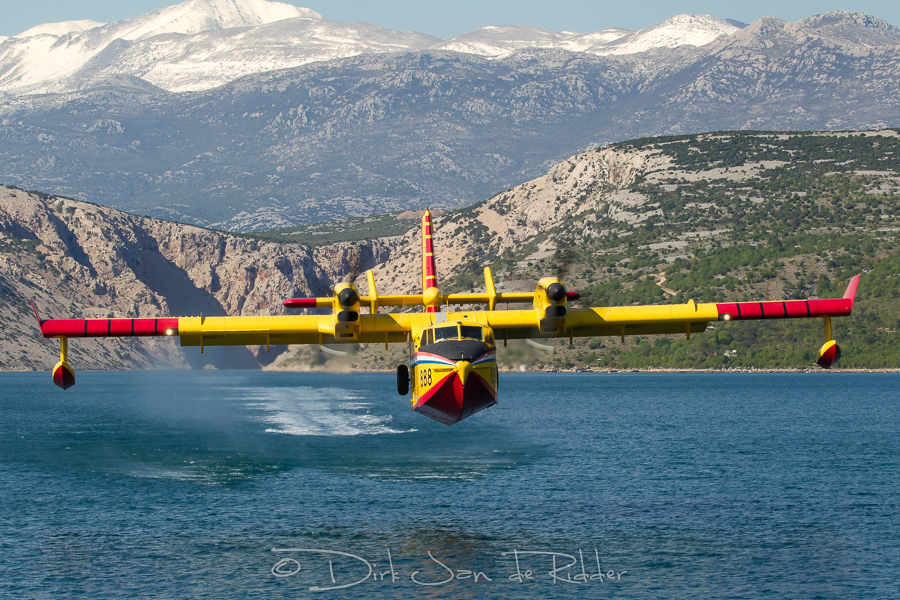
“The type of vegetation and the layout of the area that we are defending requires that we have very specific tactics compared to some other countries. What we try to do is catch the head of the fire. In some other countries, they try to reach the fire from behind or they try to flank it and then keep narrowing the flanks. We don’t have the space for that. It’s like in a war, the big countries can trade space for time and then exhaust the enemy, so in some countries they are just protecting houses and infrastructure as they wait for the rain. The narrowness of the Croatian coastline is not wide enough for us to wait. So, we try to stop the progress of the fire, because once you stop the progress what’s left is that you only need to do cleaning. On some fires, we use all aircraft types in an effort to stop the head. Sometimes the situation on the head is too dangerous or the terrain is such that the smaller [AT-802] aircraft cannot withstand flying in those conditions. We then assign tasks for them on a different part of a fire. For example, if there is a big fire progressing fast and leaving behind just small flanks, then the Air Tractors are going to attack the flanks in order to prevent that the flank becomes a new head if the wind shifts. Sometimes they chase the small spot fires. It would be stupid to waste 6,000 litres of water on something that can be put out with 3,000.”
CL-415 captains take a leading role when both aircraft types fight the same wildfire, as lieutenant colonel Turković explains: “When we go to a fire we coordinate with ground troops in terms of safety and to determine the tactics. Once this coordination is done, the pilot decides what is going to happen in terms of tactical use of the aircraft. Since the majority of the CL-415 pilots have flown the Air Tractors, or have at least spent a lot of time flying with them in terrain, they decide what is going to be done with both types of aircraft. During the training process, we try to do all different scenarios with a single aircraft, with a group of aircraft, and so on, so that when the real situation comes we just combine these elements and put them in a real-life situation. This is why we do a big part of our training on real fires. Whoever becomes a firefighting pilot, regardless of the type of aircraft, in order to get his certification, he has to fly a certain amount of hours on a real fire. That is why we have [AT-802] twin-seaters in both configurations [with and without floats]. When the pilot is released for solo flights, he has already been in real situations with other aircraft inside a confined area with smoke obstacles and so on. Then at least we know he will be performing safely. Maybe in the beginning he will not be very efficient, but he will not crash into another aircraft or into a hill behind the smoke.”
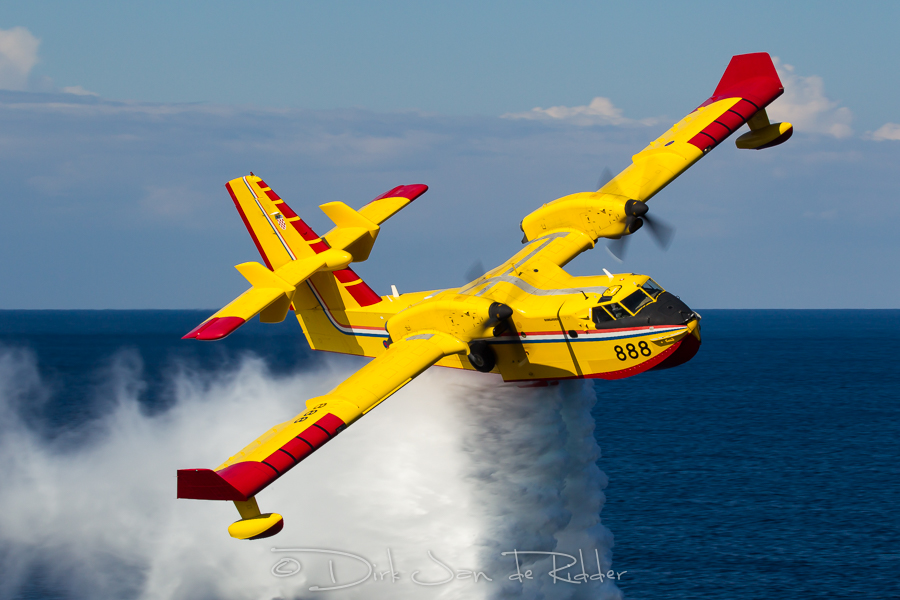
To the question whether something like a ‘firefighting season’ exists, another profound answer follows: “We have two different universes. First there is the administration universe. Guys who are high above say that the calendar year is divided in three phases: preparation, the firefighting season and recuperation. This is done for planning of resources etcetera. In the real world, fires don’t recognise these phases. They only recognise the meteorological situation and the number of fools that are very incautious during the drought. We are only changing the number of aircraft on alert and the number of fires in every particular month. Sometimes we have more fires during February and March than during July. After the winter drought, there is dry grass and people go into their vineyards and then they clean and burn it. Sometimes it goes away downwind and then we have business. In April the rain falls, maybe the wind drops, the green grass grows and there is no potential for fire. As the summer approaches, the [high] grass is getting dry and then the real peak of the year is from July 15 to the first of September, but in the past ten years it has shifted more towards autumn.”
“This year shows us that there is a drought, so precipitation is below average and wind is above average. What we can expect is that in the beginning of the summer season, nature is very well adaptive to fires. In these conditions, what we are going to do is ‘tactical package A’. That means we are going to deploy Air Tractors filled with water on recon flights and if they see any spot fires [new fires that start outside the area of the main fire], they will attack it. Inside our regulations, the pilots are allowed to attack the fire, regardless of whether there is a request filed by anyone in the system. In this tactical package A we are aware that whenever there is a fire, we will have to be very swift in scrambling and that we will have to scramble a lot of aircraft. That is how we set up the system.”
“In 2014, in the middle of June and July there was green grass two feet tall. Then we know if there is a fire, and it is very unlikely that there will be one, that this is going to be a slowly moving fire with no potential energy and no present danger. Then we move to tactical package B. There is no need for patrols. Somebody is going to see the fire, we have plenty of time and we don’t have to scramble very fast, nor with a lot of aircraft. When there is a drought and there is wind, we dispatch aircraft without calculating whether we need two, three or four aircraft. It is a little bit more expensive, but we have to do it. We just send as many aircraft as we can. It is better to have the aircraft in the air, because the pilots are allowed to assess the fires and fight the fires. I think that our record is that we caught 17 beginning fires on one day and each of these fires could have presented a potential disaster.”
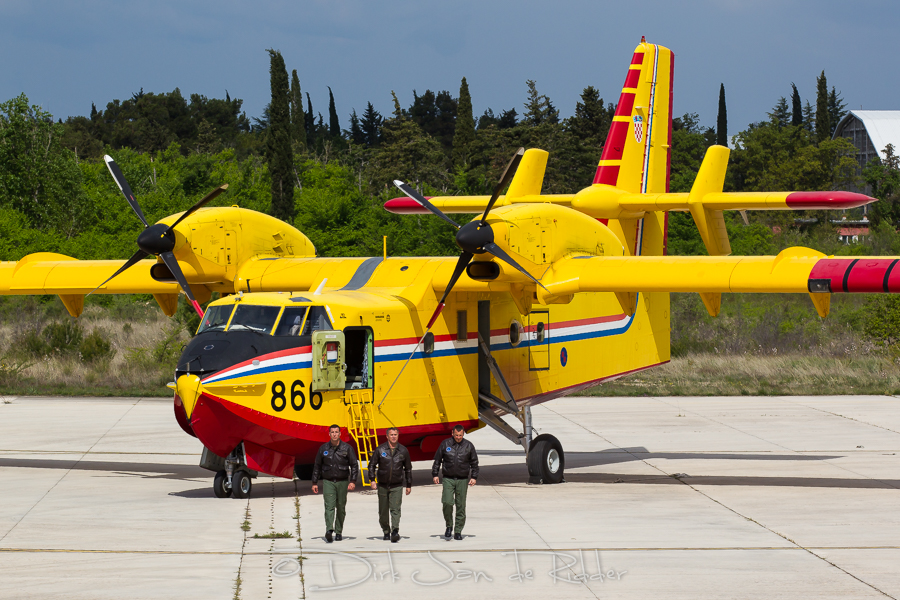
In favourable conditions, it takes a CL-415 traveling at 70 knots twelve seconds, the equivalent of 410 meters (1350 feet), to scoop up 6,000 litres of water. Pilots describe it as the simplest manoeuvre during firefighting. In case of waves at sea it may take longer than a minute as water can only be scooped up from the top of each wave. The 3,000 litre water tank of the AT-802A Fire Boss is filled in around 15 seconds. Lieutenant colonel Turković: “When we scoop water, the first thing that we assess is the dimensions of the body of water. The second thing is the prevailing conditions and the third thing is obstacles. Basically 95% of waters in Croatia are not restricted for water scooping. It is a pilot’s decision where and how he is going to perform that. In our documentation we don’t forbid places, except rivers and harbours.”
“We tell pilots to choose not the closest area, not the one with the best conditions, because it may be 200 miles away, but the most optimal one. Find an area that is near enough, where the conditions are bearable for repeatable operations, where there are no obstacles, no birds, that you can safely climb out of and so on. During the training and during the experience gathering process, they get a mental picture of what is a good or bad body of water. This allows them to go to another country and, based on the same elements, pick a body of water there. If you prescribe something inside your country, and if the pilots don’t know the background of why those locations are good, how are they going to choose a suitable location? We make ourselves thinkers and not paper users, because if you are a paper user and you lose a paper, you are worth nothing.”
Crews on alert are divided into a blue and a yellow group. Lieutenant colonel Turković explains: “The yellow group is staying at the airport and they have to release brakes within 30 minutes of signal. In real life, it will happen between 17 and 22 minutes. The 30 minutes is because we don’t want to put pressure on them and we don’t want them to hurry. If they forget something here at the apron, it can cost them their lives two hours later. Blue crews are situated wherever they choose, but they are obligated to release breaks two hours after the signal. The purpose of the blue crews is, if the yellow crew reaches the daily limit, we switch the crews. If the situation is such that we made a mistake in how many aircraft we put on alert, we fetch blue crews. The third reason for having them is that somebody in the yellow group is not feeling well, so that we have a reserve. Usually, they inform themselves in the morning of the situation and if there are no takeoffs until noon [they know] this is not the day that they are going to be scrambled.”
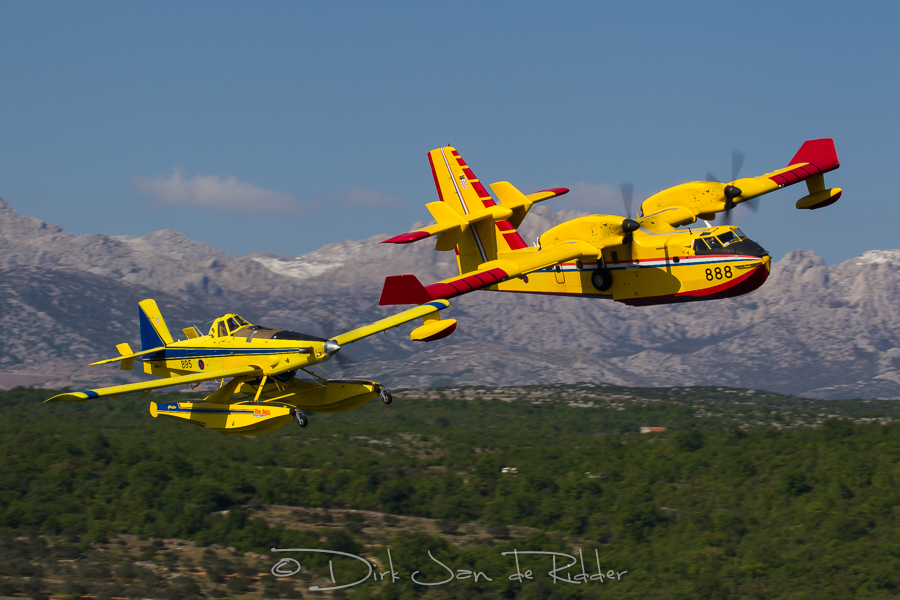
“Our daily limit is seven hours or 100 drops [60 for the Fire Boss], whichever is achieved first. During the years, we have tried to find where to put the limit. Based on mistakes in flight and some things that happened to pilots, we decided that after more than seven hours you get a little undercapacitated. You are working in heat and whatever you are doing, you are repeating the same cycles. Seven hours is two tanks of fuel and you’re off. For the drops, first we had [a limit of] eighty and then we saw that sometimes when there is a fire on an island and they reach the drop limit way before they spend the flight hours. We needed to change the crew very early during the day and this opened up the need for the third crew per aircraft per day. We said maybe we should raise the limit, but where should we put a stop? Then for two years we had no [drop] limit at all, let’s see what’s happening. We saw that it can go to madness, it went to 160 drops. That is 160 opportunities to lose your head.”
The 160 drops on a single day was actually a world record set by major Ivica Markač and his crew in September 2013, an average of one drop every three minutes for the duration of eight hours! Lieutenant colonel Turković about that: “No country can reach that number [with their current limitations]. It was a fire on an island on the verge of the sea. The biggest problem for the captain was to wait for the aircraft to be prepared to scoop, because it has a timed cycle.” While working days can be long for aircrew, they are even longer for maintenance crews. On a full day of firefighting operations, maintenance crews may work as long as 16 hours per day, although they have breaks in between. They release the aircraft early in the morning, then the aircraft goes somewhere to fight a fire, sometimes returning every 3,5 hours for fuel and/or a crew change, and finally returns ten or twelve hours after the first takeoff.
A full report appeared in several magazines, including in AirForces Monthly:


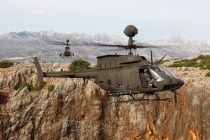
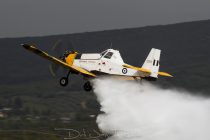
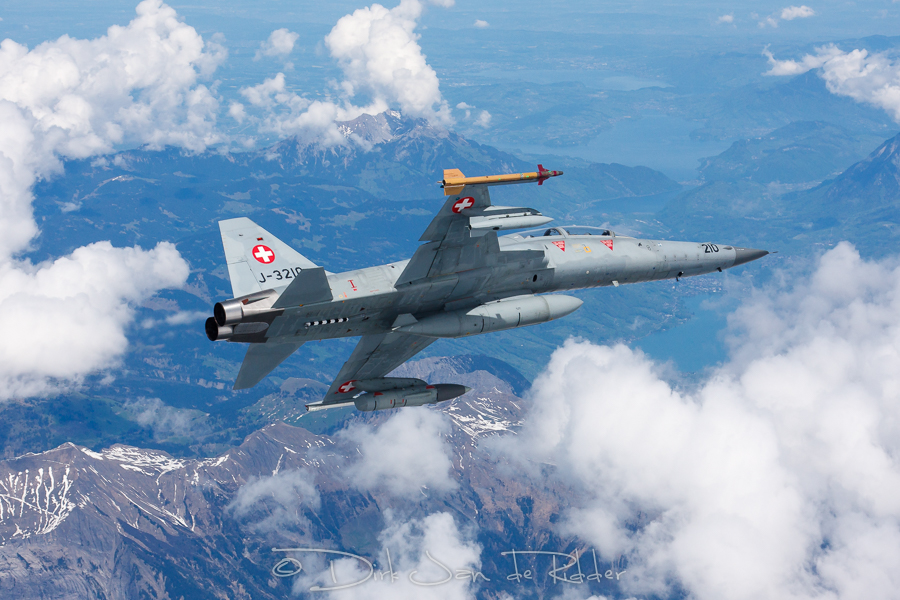

Comments are closed.